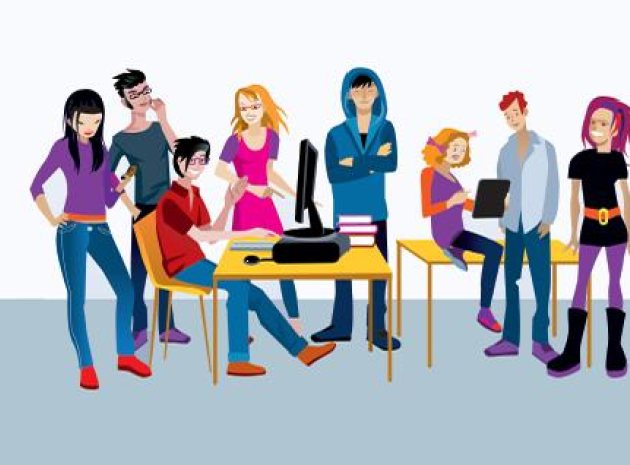Today’s teenagers are probably more comfortable expressing themselves via digital media than they are face-to-face, and technology’s grip doesn’t seem like it will loosen any time soon. Savvy teachers, therefore, should and can look at ways of using their students’ love of technology to help accelerate their learning. The skills that can be gained from using different social media channels and platforms are extremely transferrable, and not just limited to those subjects with a media element.
How we learn is changing
At university level I have seen the way in which students learn change dramatically in the last few years. The internet has made everything so much more accessible, and whereas before doing research could take hours, if not days, now students are rarely inclined to go beyond the first Wikipedia page. You now see students looking at the learning outcomes of their assessments and the criteria they’re being marked on, and reverse-engineering their research to fit these factors mitigating the need to attend any lectures.
This may seem like laziness, but I prefer to look at it as intelligent, efficient and savvy; a product of the digital generation. It also changes the value proposition of what a lecturer is there to do. As we are no longer the gatekeepers of knowledge, we need to ask ourselves why should the students turn up, not why wouldn’t they.
There is such a vast amount of free software, applications and digital products available to young people now, that forcing them to use anything different can be a waste of time. Instead of getting them invested in your school’s specific VLE, it’s better to engage them with free tools they’ll use once they leave school. They’re less likely to resist this way of teaching, too, because it’s familiar.
For example; instead of setting work for students to go off and complete independently, they may benefit more by being encouraged to carry out constructive research shared socially. Findings can then be fed into a Google Hangout group, which can be set up and monitored by an appropriate adult. They can also be part of the group, and can create groups that fall outside of set friendships, to encourage a further feeling of community engagement outside of the classroom. This is also a great way to prepare students for further study or their future careers, as it makes use of collaborative skills such as team work.
Building confidence
When I first started using social media in lectures, people thought I was mad because I decided to set up a Twitter wall in class whereby students could tweet questions using a dedicated hashtag. Whilst you do worry about what you’re going to get, all questions are traceable back to specific students, so anyone posting inappropriately can be swiftly identified. On top of this, there is a key benefit to using this unorthodox method of Q&A; it allows those who are less confident, or who perhaps don’t have English as a first language, to ask questions in a manner which may feel more comfortable than the traditional hand-raising.
We also need to realise that young people’s role models are inceasingly more likely to be vloggers than pop stars; teenage girls want to be the next Zoella, and boys think that Alfie Deyes is the epitome of cool. And so, whilst it’s important to communicate to your students that it takes a lot of hard work and dedication to become the next ‘star vlogger’, in finding a specific voice and audience on social media young people can also boost their self-esteem and confidence.
Subject-specific
Probably the most interesting and enjoyable way social media can be used in a classroom environment is through subject-specific tasks. Arts and humanities subjects lend themselves incredibly well to social media platforms such as YouTube and Vine, as do the sciences; whereby recording an experiment can be used as a tool for analysis.
If you take the view that everyone has access to everyone in the world via these platforms, but that you can create your own community, or communities, it allows you to engage and do work to which there would previously be limitations. Whilst students can learn the technical side of how to shoot film and tell stories, video-sharing platforms can also be used to understand reach, audiences and influence. The influence of digital in this sense can help students not only learn about the technical and creative, but also the business sense of content creation.
Social media can bring a range of benefits and new areas to explore into the classroom. It’s important to err on the side of caution, and monitor its usage accordingly; however from an engagement perspective using a tool which students already identify and are comfortable with can often help their learning potential. As any filmmaker would tell you; it’s crucial that you know your audience!
About the author
Neil Peplow is Chief Operating Officer at Met Film School (www.metfilmschool.ac.uk)









